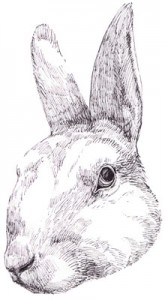Animal Care & Use
Alternatives to the Use of Animals in Research and Instruction
 Alternatives to the use of animals in research and instruction must be considered. This is a legal and ethical obligation.
Alternatives to the use of animals in research and instruction must be considered. This is a legal and ethical obligation.
Alternative methods fall into three broad categories called the “3Rs”:
- Replacement refers to the use of a non-animal model or animals of lower phylogeny
- Reduction refers to a reduced number of animals used in the experiment
- Refinement refers to procedures designed to minimize or avoid pain and/or distress
The 3Rs were first proposed by Russell & Burch in 1959 in their book The Principles of Humane Experimental Technique. The philosophy advocated in this book is as vital today as when first proposed and is the foundation for widely accepted ethical principles for the use of animals in research.
The Animal Welfare Act regulations the Public Health Service Policy require research institutions to ensure that investigators have appropriately considered alternatives to procedures that can cause more than slight or momentary pain or distress in animals (UGA Animal Use Category B and C), consistent with sound research design. To this end, the USDA requires investigators to provide a written narrative of the methods used and sources consulted to determine availability of alternatives. The narrative must include adequate information for the IACUC to assess that a reasonable and good faith effort was made to determine the availability of alternatives or alternative methods. The UGA IACUC Animal Use Protocol requests this specific information to meet these legal requirements and ethical obligations.
Alternatives Resources:
- OPRR/ARENA IACUC Guidebook
- USDA Animal Welfare Information Center (AWIC)
- Johns Hopkins Center for Alternatives to Animal Testing (CAAT)
- UC Davis Center for Animal Alternatives Information
- Scientists Center for Animal Welfare
- Norwegian Reference Centere for Laboratory Animal Science & Alternatives (NORINA)
- Public Responsibility in Medicine and Research (PRIM&R)
- Interagency Coordinating Committee on the Validation of Alternative Methods (ICCVAM)
- Bibliography on Alternatives to the Use of Live Vertebrates in Biomedical Research and Testing (ALTBIB at the National Library of Medicine)
- Proceedings of the 6th World Conference on Alternatives
- CCAC Guidelines on Choosing Appropriate Endpoints in Experiments Using Animals (See “3. endpoints”)
- Norecopa 3R Guide
